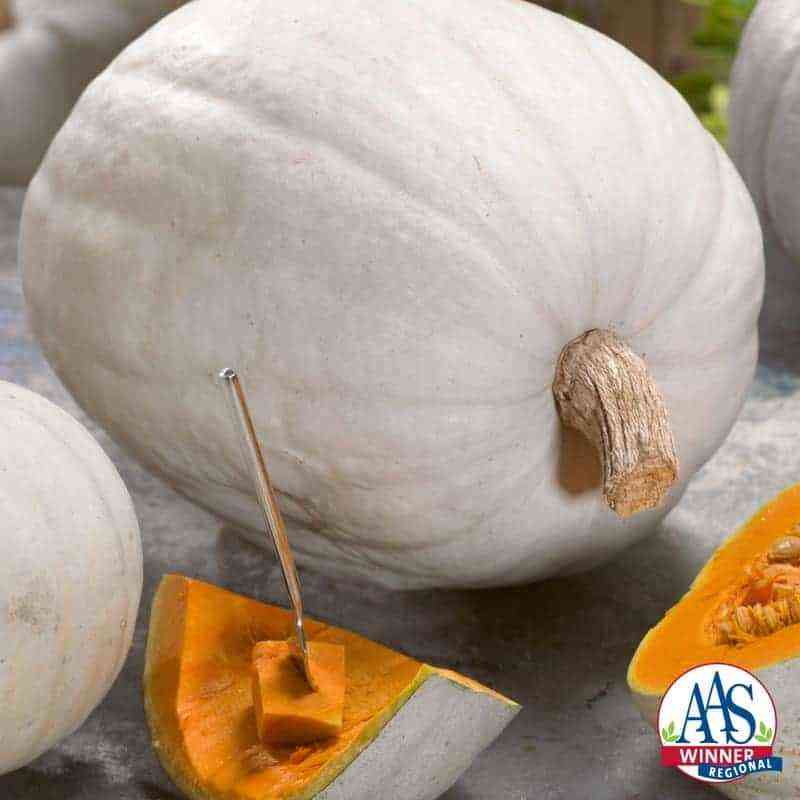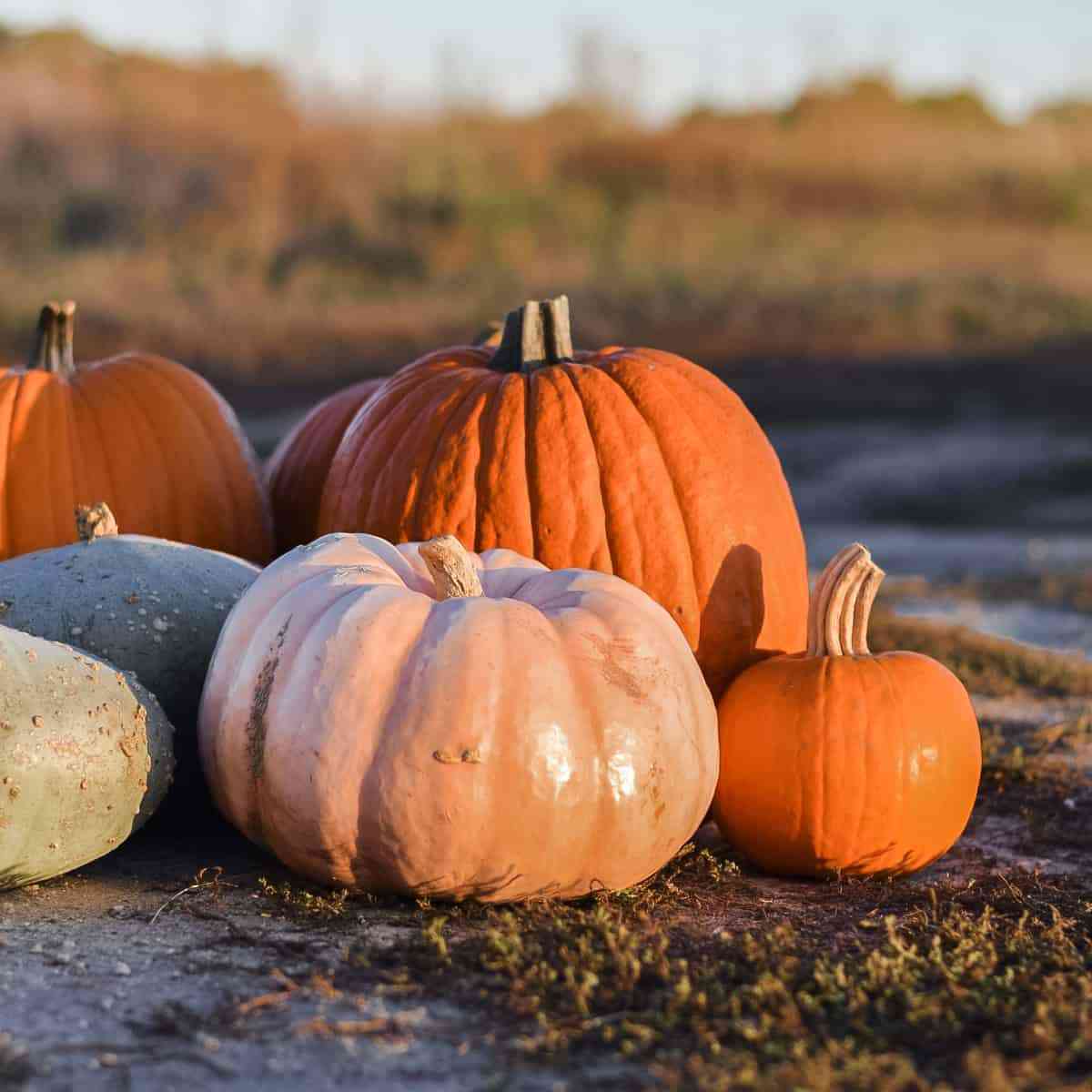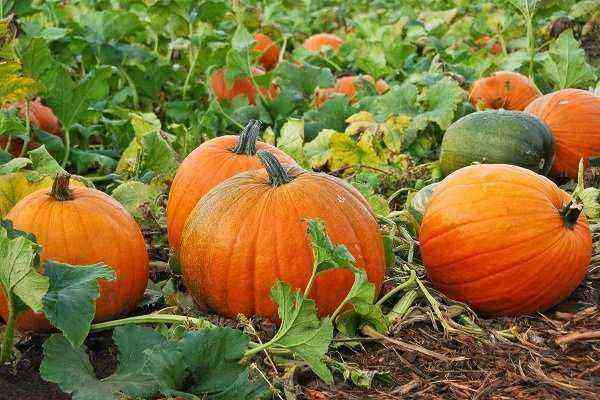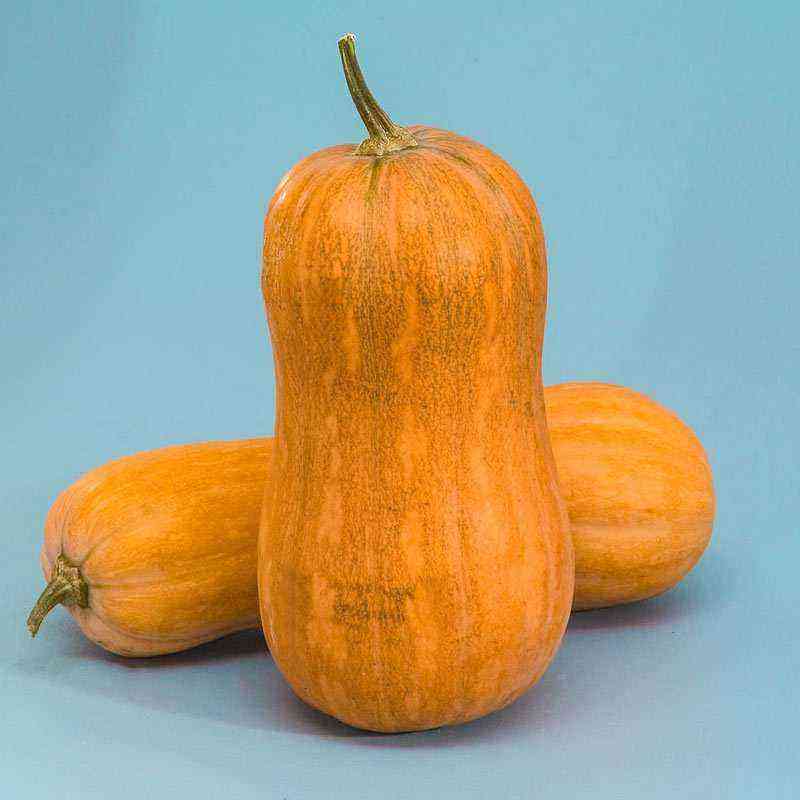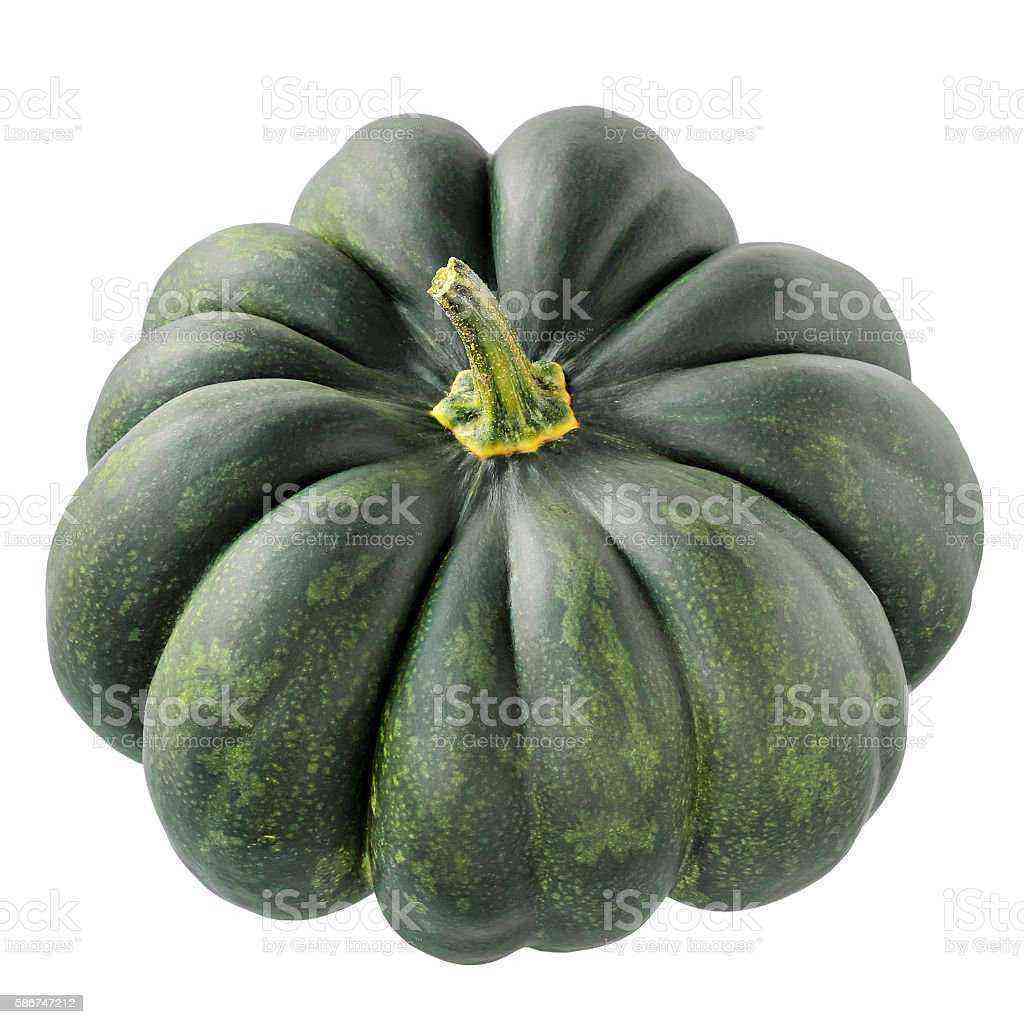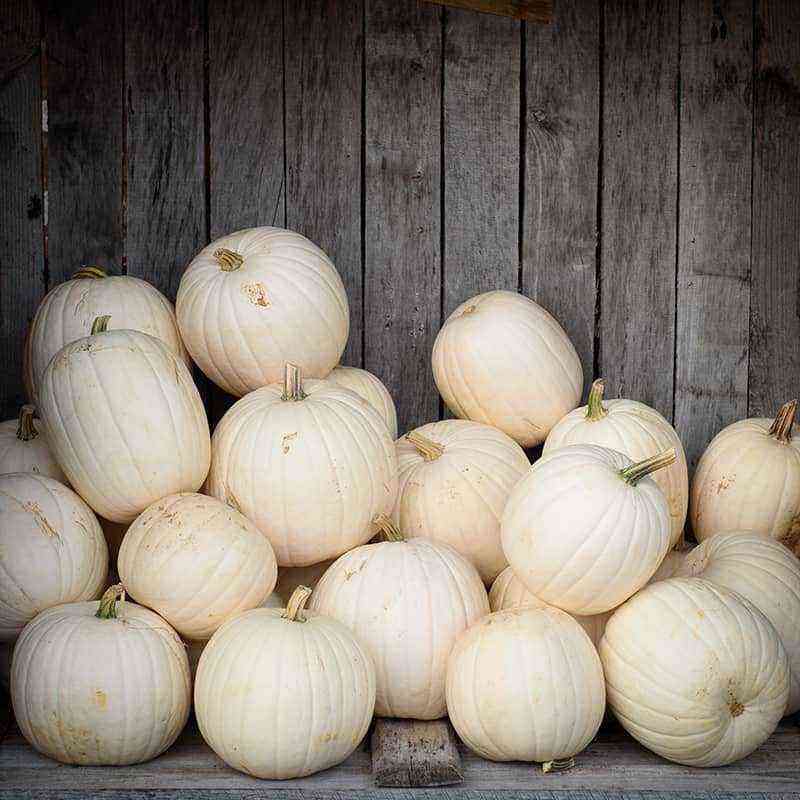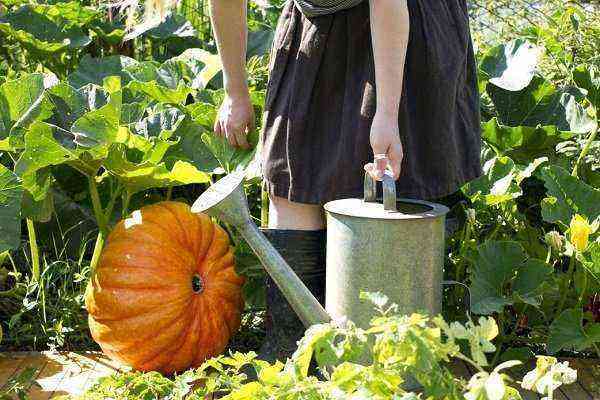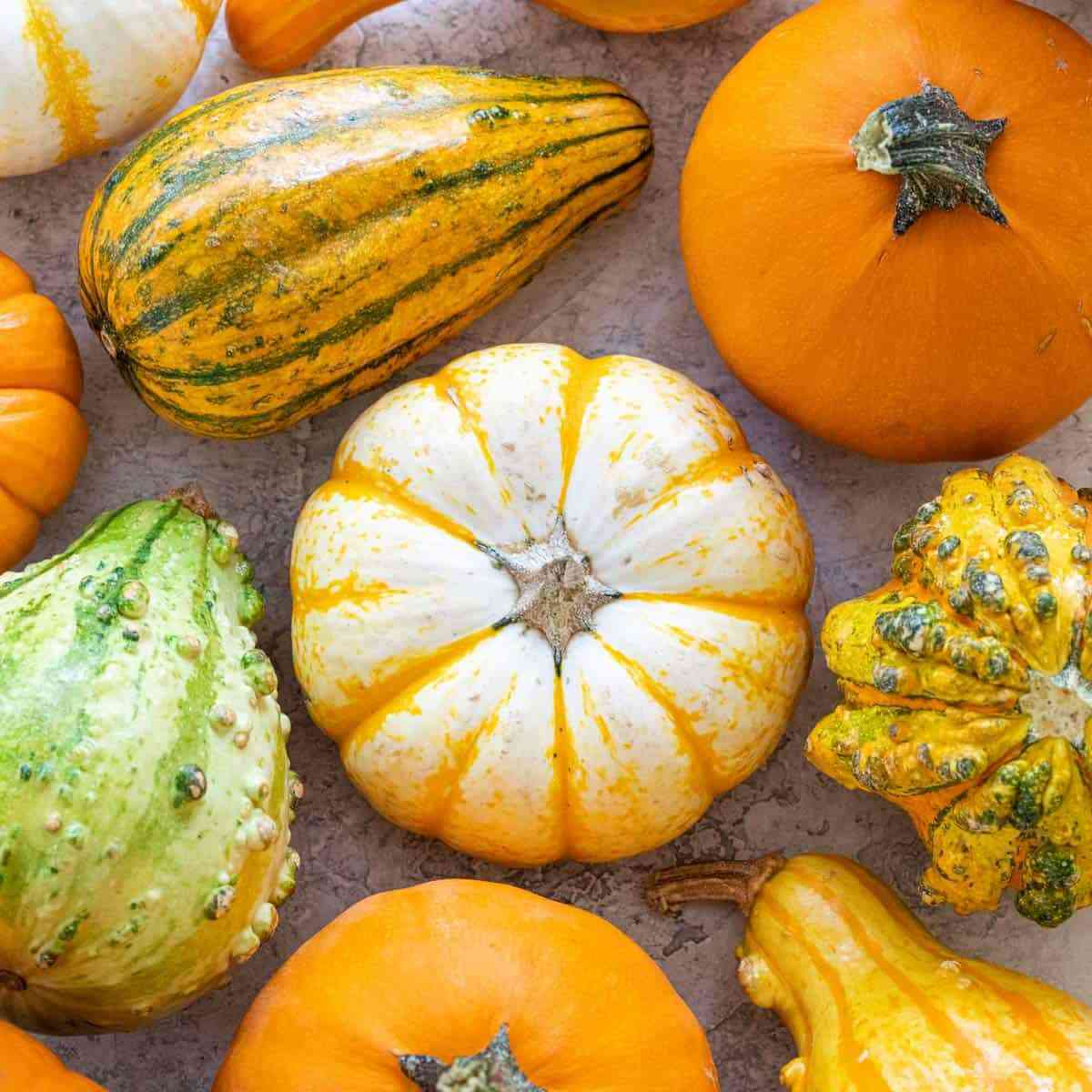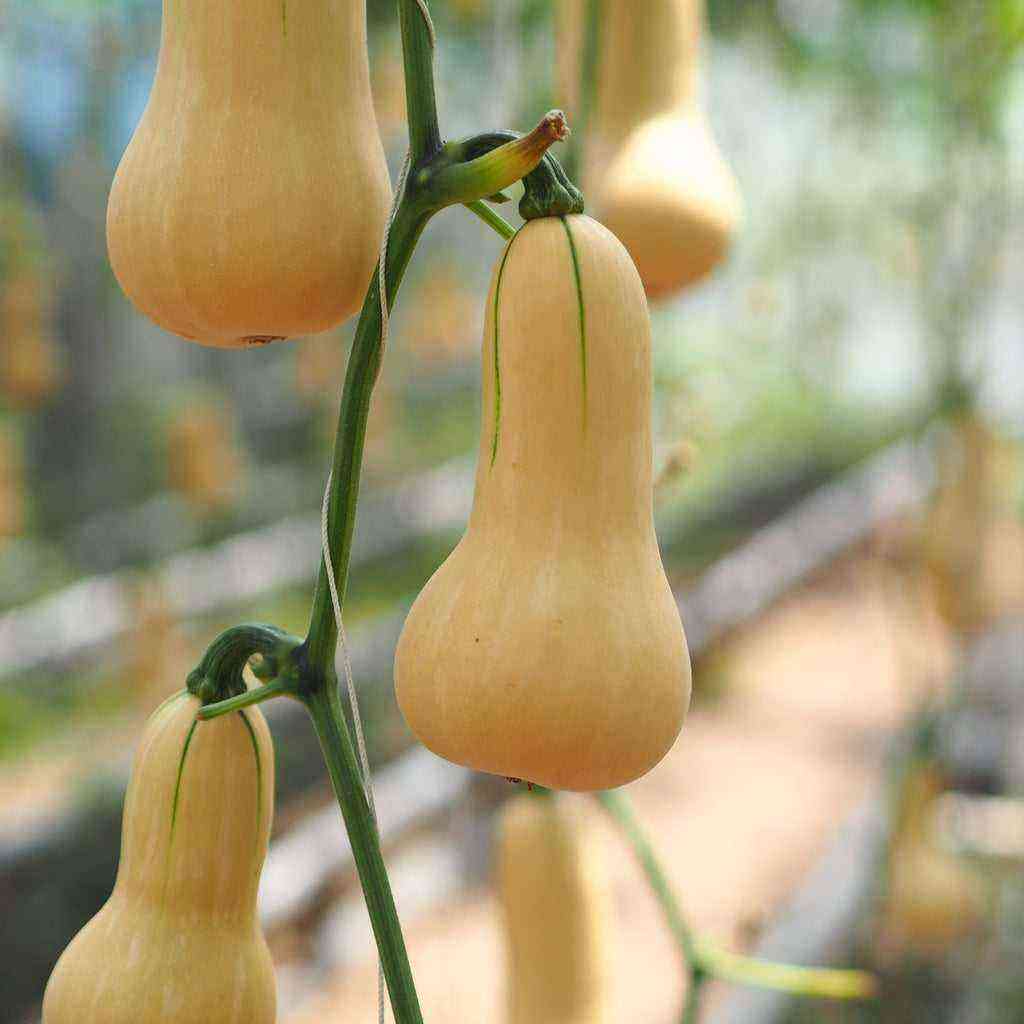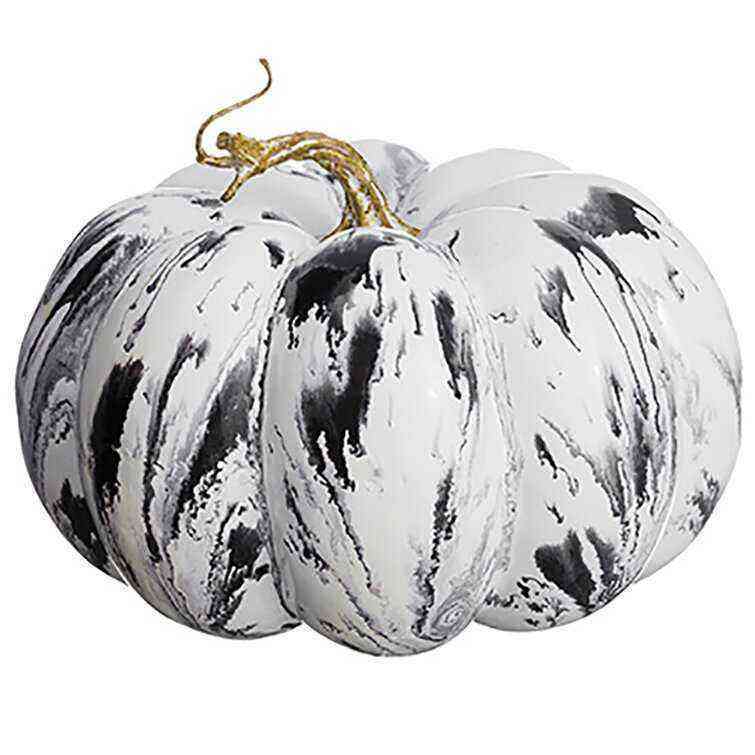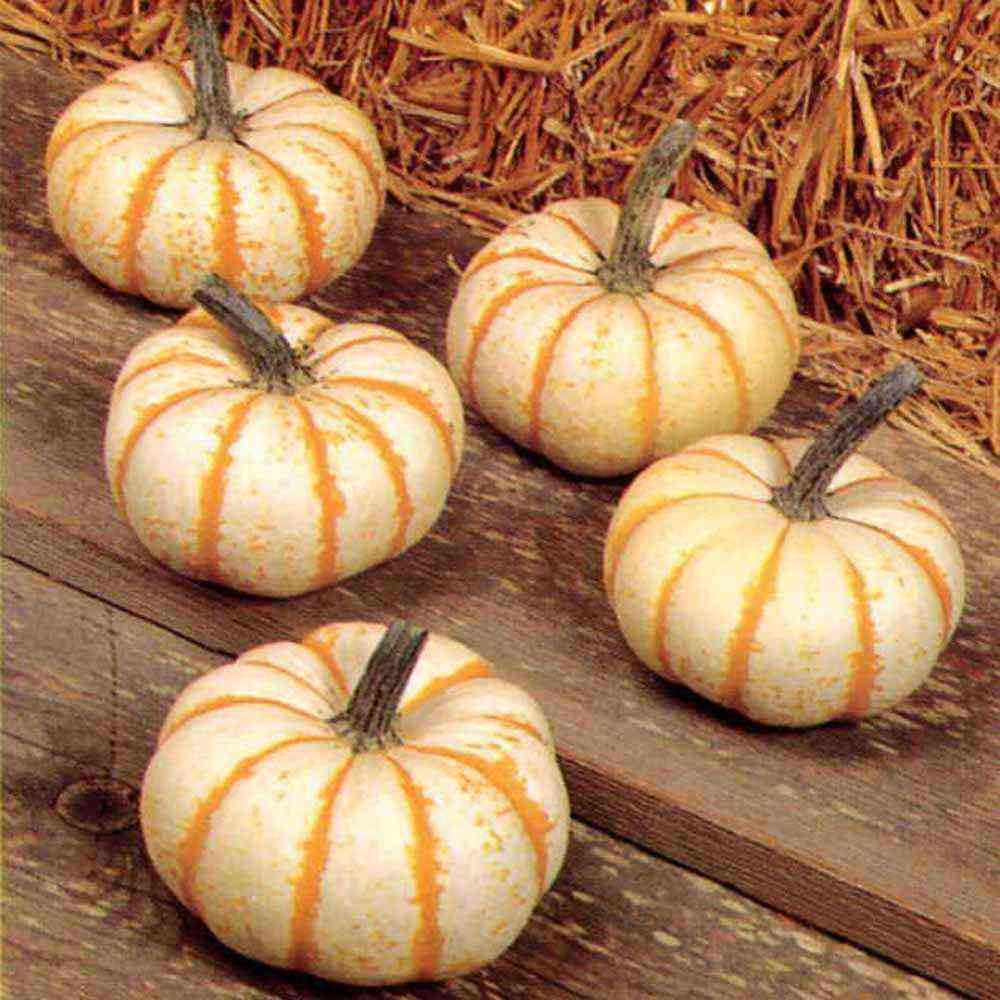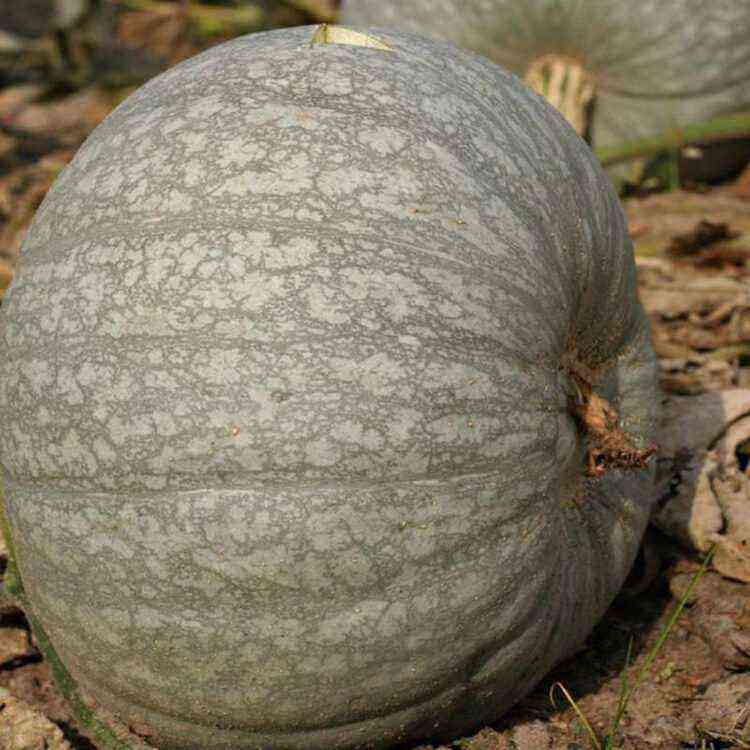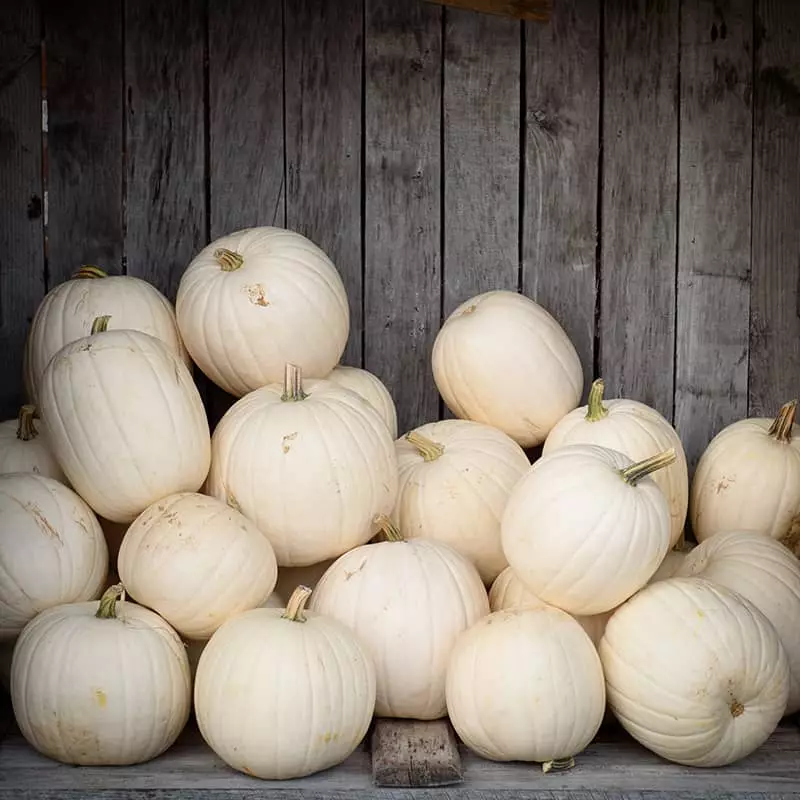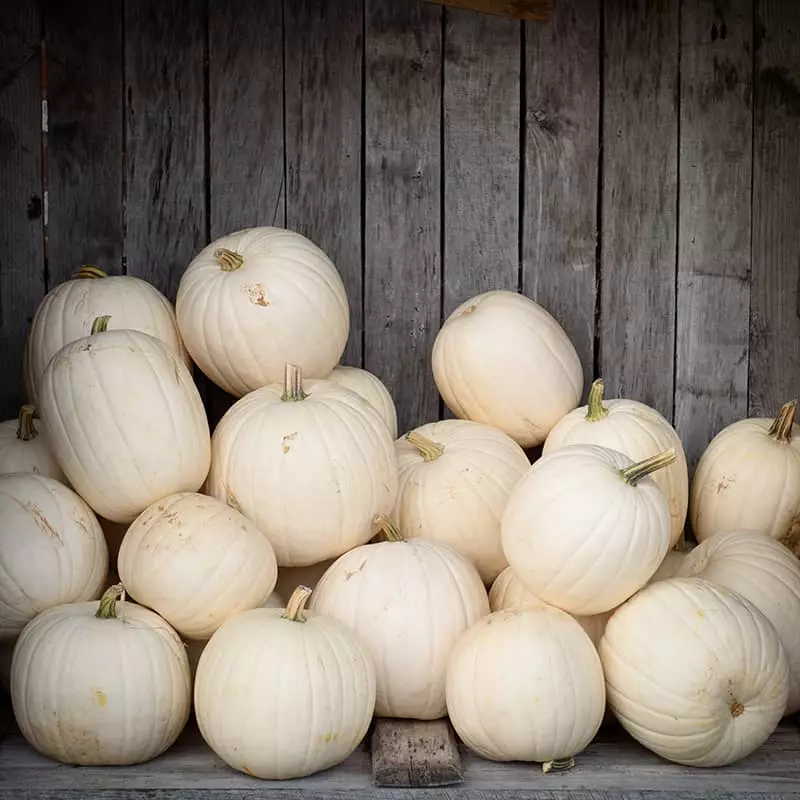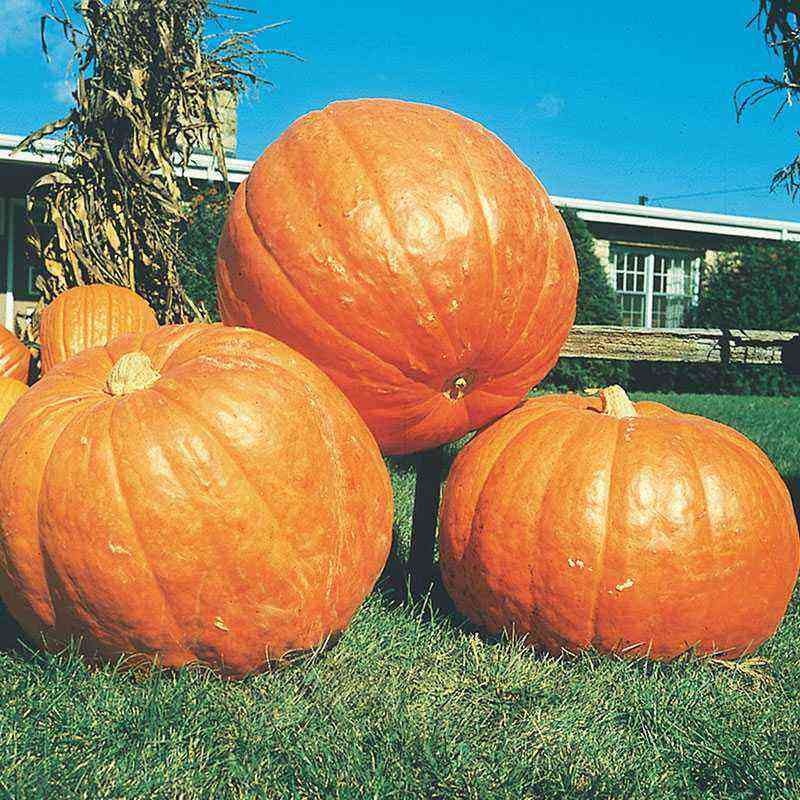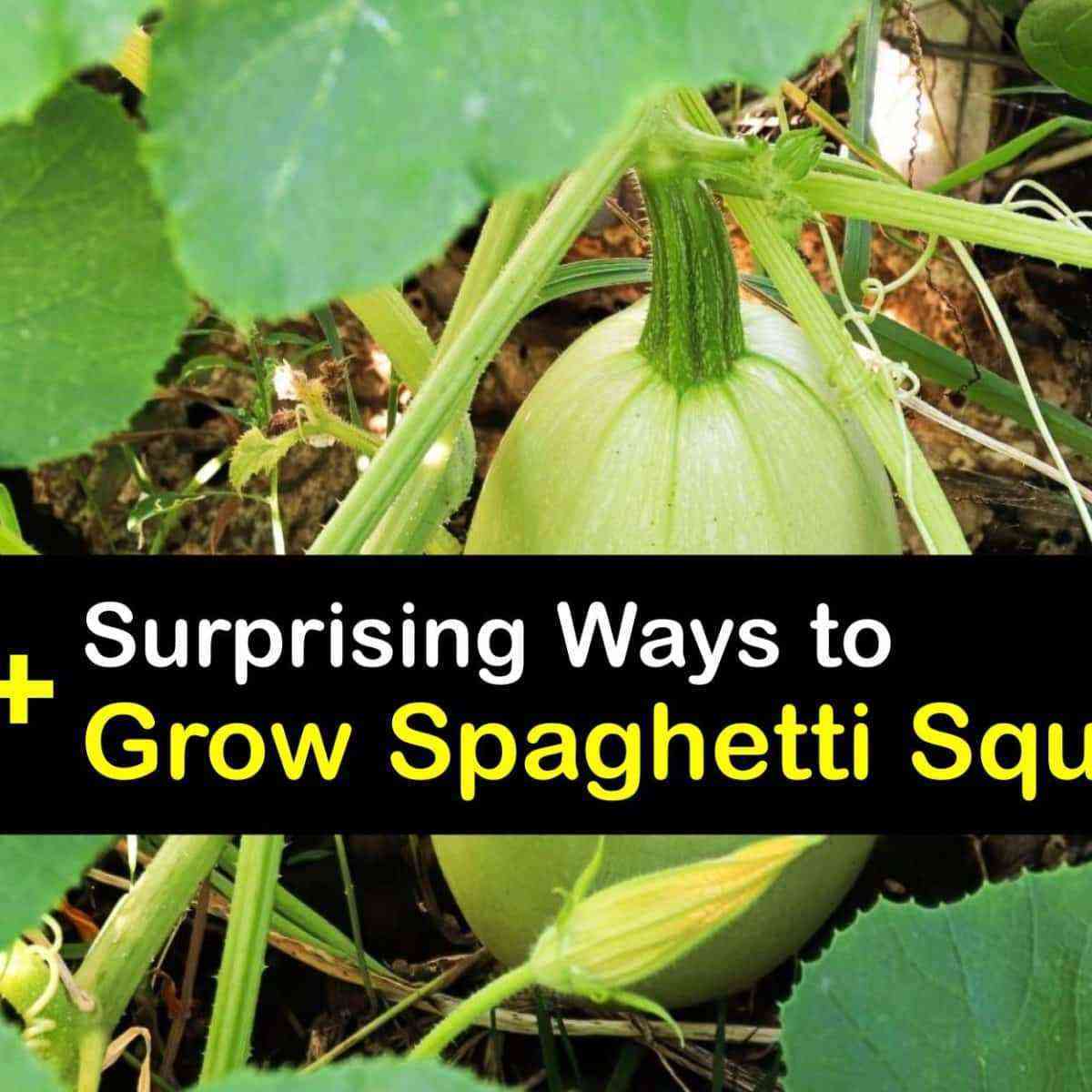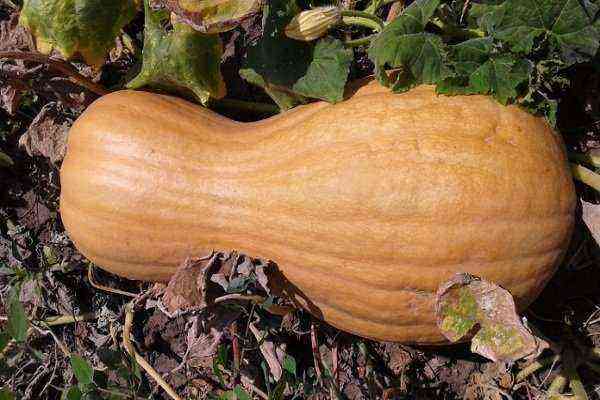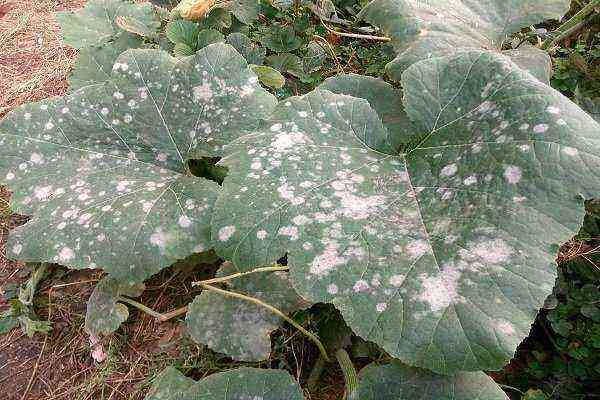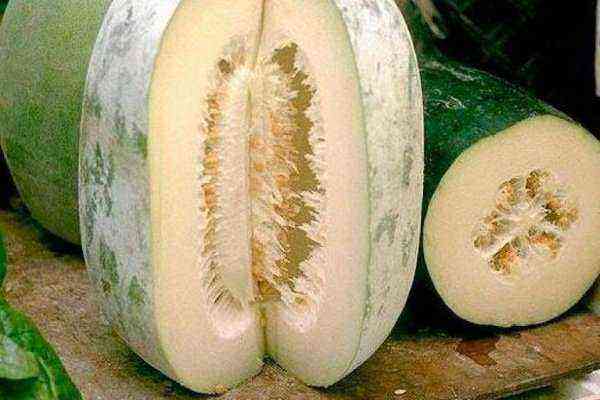The red pumpkin belongs to the cucurbitaceae family and is an ornamental variety. It differs from other types of motley, bright saturated color of the peel. The flesh can be either red or orange, depending on the particular variety. There are many types of red pumpkin, but on the territory of Russia, 2 are considered the most common – Parisian and Little Red Riding Hood.
Turban Pumpkin Little Red Riding Hood
The variety is most often used for landscaping a personal plot as a decorative element. The variety has the most unusual form for a pumpkin – the Little Red Riding Hood cannot be confused with any other variety.
Feature – numerous vines-antennae depart from the main trunk. For them, the lashes are hung on a vertical trellis, which saves space in the garden.
Variety description
The variety is considered high-yielding, since from 10 sq. m you can remove 40-60 kg of fruit. If grown on a vertical support, then more – one bush will give from 10 to 20 pumpkins.
Little Red Riding Hood belongs to a large-fruited variety, but exclusively in the structure and shape of seeds, stems, leaves. The fruits themselves have small parameters and weight. In terms of functionality and consumer characteristics, it is considered a portioned pumpkin.
The plant easily tolerates drought and high air temperatures, without even needing additional moisture. Like all large-fruited varieties, Little Red Riding Hood is susceptible to diseases, but she is not afraid of powdery mildew, slugs, aphids and spider mites.
Thanks to a strong immune system, sometimes even pre-planting insecticidal treatment is not required.
Characteristics and features
The most unusual characteristic of the Little Red Riding Hood is the shape and color of the pumpkin – it resembles an acorn, a mushroom and a headdress of eastern countries (turban). At the same time, the shade of the lower part and the upper, made in the form of a cap, differ.
Features:
- weight varies from 2 to 5 kg;
- skin color: top – orange-fiery, red; bottom – white or light green;
- the shade of the pulp is orange;
- the pulp is quite sweet, sugary-friable in structure;
- the taste is pleasant, without bitterness and astringency;
- melon-nut aftertaste (reminiscent of nutmeg);
- average diameter from 8 to 20 cm;
- pulp thickness 6–10 cm;
- ripening period – about 100 days;
- the surface is slightly segmented with or without clear edges;
- juiciness is weak;
- nutritional value – contains the most carotene;
- small seed chamber;
- seeds are large;
- shell of the seed core orange with a rim;
- bush strongly sprawling;
- lashes are long with antennae.
If pinching of vines is carried out, then the fruits will grow large, but there will be few of them on the bush. If you do not pinch the stem, then you can collect about 20 pumpkins from one bush.
Pros and cons of the variety
The advantages of Little Red Riding Hood are much greater than the disadvantages. The main advantages include the following:
- compactness due to long lashes that are tied up;
- exotic appearance;
- versatility of use – can be used for decoration and eaten;
- optimal weight of fruits (not large and not very small);
- the ability to adjust the weight by pinching;
- high level of productivity;
- resistance to drought and cold, major diseases;
- sweetness and pleasant aroma;
- duration of storage;
- transportability;
- ripening indoors – if you pick pumpkins in an unripe form, they will quickly “reach” in the room;
- suitability of planting material for 6–8 years;
- seed size.
Among the shortcomings, experienced gardeners note the following:
- slight juiciness, but at the same time watery structure;
- too hard a peel when fully ripe (and the longer the pumpkin is stored, the tougher the peel becomes, to the point that it is impossible to cut).
It is forbidden to grow Little Red Riding Hood next to other pumpkin crops. Over-pollination occurs and the true color of the surface will not be achieved.
Peculiarities of growing
Since Little Red Riding Hood easily adapts to both hot and cold conditions. It is grown in almost all regions of Russia. But for laying seeds in the ground, the air temperature must stabilize to between + 8 and + 10 ° C.

Landing methods, based on the region:
- Southern latitudes. Seeds in open soil. The deadline is the last day of April.
- The middle lane and areas with identical climatic conditions. First seedlings, then transplanting bushes into the garden. Time – March – April.
- Ural, Siberia. Only in greenhouses. The period is April.
If return frosts are expected, then after laying the planting material in the beds, be sure to cover it with plastic wrap. Pre-mulch the holes (with straw, hay, but even better with peat or compost, which additionally generate heat).
What you need for boarding:
- neutral soil – from 6,5 to 7,5 pH acidity;
- soil fertility (Little Red Riding Hood is demanding on it);
- sunny area – without a single shading;
- planting scheme – the distance between rows is about 1 m, between seedlings in one row is 0,8 m;
- when growing by seedling method, it is strictly forbidden to dive a pumpkin – Little Red Riding Hood does not tolerate frequent transplants due to the branching of the root system;
- before sowing, 5 kg of mullein per 1 sq. m.
Further cultivation and care are identical to the standard rules for all types of pumpkins. But there are certain nuances specifically for this variety:
- Watering. Despite the good tolerance of drought, in order to get a decent harvest, monitor the level of soil moisture. A dry crust should not form on it and fluid stagnation is strictly prohibited. Humidification is carried out 1 time in 7-10 days, depending on the weather. Rules:
- if the soil is too dry, do not add water immediately in large quantities, as the pumpkins will burst;
- young plants require 2 to 3 liters;
- during flowering – 4-5 liters of water under one bush;
- during the formation of fruits and beyond – 11–12 l;
- 15–20 days before harvest, stop moisturizing completely.
- Garter. The procedure allows you to save space on the beds, to prevent fruit rotting in rainy weather. To do this, make a support / trellis. If you plant Little Red Riding Hood near the fence (but always on the sunny side), you can make a hedge.
- Topping. The event stimulates the growth of lateral lashes. Pinch the main vine at the 1m growth stage.
- Loosening. It is carried out so that oxygen penetrates into the root system. Additionally, the dry crust is destroyed. Hill up when 7-8 true leaves are formed.
- Mulching. It is advisable to use sawdust, sand and hay. Turn the material over periodically, otherwise slugs will start in it.
- Whip direction. Growth adjustment is required, otherwise large leaves will create a shadow for the fruits, and they will not acquire the desired color.
If watering is insufficient, this will affect the quality of pumpkins. Their flesh will become bitter, the color will turn pale, and the size will be small. The lack of moisture is indicated by yellowing of the leaves, drying out of the ovaries, thinning of the stem.
Can you eat a decorative pumpkin?
Decorative vegetables are intended to decorate the interior and create a special design in the local area. Such pumpkins are crazy popular with designers, but, unlike other red varieties, Little Red Riding Hood is also eaten.
The variety is used to prepare a variety of dishes:
- porridge;
- casseroles;
- puree soups;
- sauces;
- garnish;
- jams and jams;
- juice, etc.
The vegetable can not only be subjected to heat treatment, but also used raw for salads and snacks. The main thing is to pluck the fruit in incomplete technical ripeness, while the pulp has not yet acquired a slight bitterness.
Nutritionists strongly recommend using the variety, as it helps to saturate the body with carotene and other beneficial substances. The result is cleansing and weight loss.
Paris red
The variety belongs to the table. It successfully bears fruit in almost all regions of Russia, it is considered mid-season. The Parisian red pumpkin was selected in France, but today it has spread all over the world and has become a favorite of many culinary experts and gourmets.
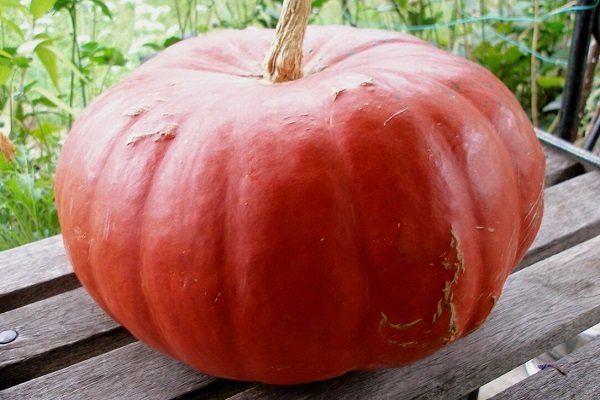
Variety description
The variety is considered large-fruited and, unlike the previous species, this is true. Some gardeners grow pumpkins that reach 20–25 kg. Parisian red is high yielding. From 1 sq. m, you can remove at least 4–10 kg (this is subject to small fruits).
The variety easily tolerates long-term transportation, is stored for a long time and does not require special conditions for care and cultivation. Carotene is contained in large quantities, so tasty and healthy dishes are prepared from fruits. Quite often, farmers use pumpkins for livestock feed.
Characteristics and features
Bushes of pumpkin Parisian red are very sprawling. The lashes are long enough, which creates convenience when growing – they are hung on supporting structures, saving space on the beds.
Characteristics:
- the shape of the fruit is rounded oblate;
- surface segmented ribbed;
- the color of the pulp is orange;
- skin tone – first bright orange, then dark red;
- weight from 5 to 20 kg, but on average about 6–9 kg;
- medium density and juiciness;
- medium-sized seed nest with large whitish and elliptical seeds;
- pulp with a crunch;
- ripening period from 100 to 120 days;
- sweetness is great.
Pros and cons of the variety
The strength of the development of the plant and the power of the bushes are at the heart of the advantages of the Parisian red pumpkin, which eliminates the fragility of the lashes and the main stem. But there are other benefits that you can’t ignore:
- high yield, transportability, keeping quality;
- color unusual for a pumpkin, commodity form;
- pulp sugar content and pleasant aroma;
- fruit size;
- the possibility of creating a hedge, as the side shoots are very long;
- versatility of application;
- unpretentiousness.
Among the shortcomings, gardeners note the stiffening of the peel during storage. Also, upon reaching technical ripeness, bitterness appears, which is why pumpkins have to be fed to livestock.
Growing conditions
Parisian red prefers sandy and light loamy soil with neutral acidity. Planting is carried out in 2 ways – seeds in the ground and through seedlings.
Sowing features:
- soil temperature from + 10 to + 12°C;
- planting material laying depth 5–7 cm;
- scheme – the distance between rows is 1,4 m, the distance between seedlings in one row is 0,9–1,0 m or 80 x 60 cm, if not very large fruits are needed;
- when growing seedlings, a special soil mixture is required, consisting of 35% humus, 5% coconut mixture and 30% soddy soil and peat;
- in the first stage of the growing season, top dressing is carried out twice:
- the first 9-11 days after the formation of sprouts (per 10 liters of water – 25 g of calcium nitrate);
- the second time after the same number of days (complex mineral fertilizer is used).
- soil for sowing seeds is prepared twice:
- in autumn during digging for 1 square. m is introduced 25 kg of humus;
- in spring – per 1 sq. m – 75–80 g of Fertika’s spring-summer preparation or station wagon.
Rules for care and cultivation:
- Moisturizing. It is strictly forbidden to pour water into this variety under the root. For irrigation, dig grooves around the perimeter and add liquid to them. Moisturize enough once a week for 1-12 liters under one bush.
- Mulching. Mandatory procedure to maintain the optimum level of soil moisture. Peat or straw/hay recommended.
- Bush formation. In order for the Parisian red pumpkin to bear fruit well, remove all stepchildren and shoots, leaving 1, maximum 2 stems. After the formation of 3 ovaries, pinch.
- Top dressing. The variety requires a lot of nutrients. Fertilization is a major aspect in growing Parisian red squash. Rules:
- the first time after the formation of 5 leaves;
- the second, when whips are formed;
- further (until the rapid growth of fruits) – every 10-15 days;
- use slurry, mullein (for 10 liters of water – 1 liter of the mixture);
- in the middle of the growing season, add minerals – for 10 liters of water – 2 tbsp. l. ammonium sulfate;
- after another 14 days – for 10 liters of water – 2 tbsp. l. potassium sulfate;
- then after 10 days – for 10 liters of water – 1 tbsp. l. potassium monophosphate;
- after the same amount of time – Agricola, Turbo, etc.
Parisian, as gardeners also call the variety, actively responds to additional foliar feeding. To do this, use 10 tsp for 1 liters of water. urea and process twice a month.
To increase the shelf life, add calcium monthly (for 10 liters of water – 1 tablespoon of calcium nitrate).
Methods of use and storage
Harvesting after frost is not allowed. You can collect the Parisian red pumpkin in an unripe state. It will perfectly reach in a warm room for 1-2 months.
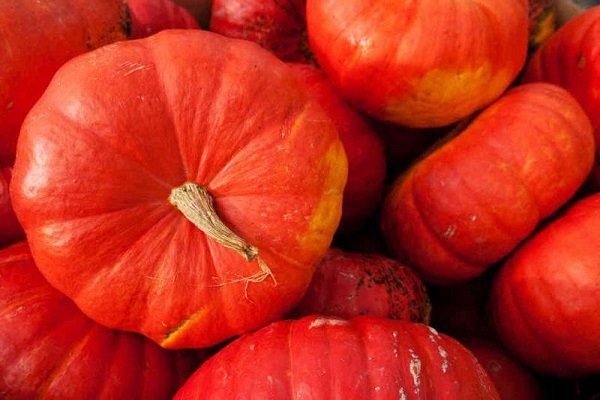
For collection, choose dry and preferably sunny weather. Then follow these rules:
- do not twist or tear off the fruit, but cut along with the stalk with scissors / secateurs / knife;
- leave the stalk about 5 cm in size;
- immediately after harvest, spread the pumpkins on a burlap or wire rack to dry completely;
- if it is cloudy outside, select a room for this, into which fresh air should flow;
- storage is allowed both in the room and in the cellar, but the humidity level should not exceed 85%.
The choice of a red pumpkin variety should not be based only on the desire to surprise the neighbors with an unusual vegetable. Each variety has its own characteristics, growing characteristics, climatic preferences, and preferred uses. However, among the variety of hybrids, it is quite possible to choose a variety that perfectly combines a decorative function and culinary use.
